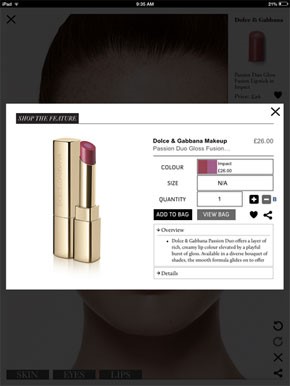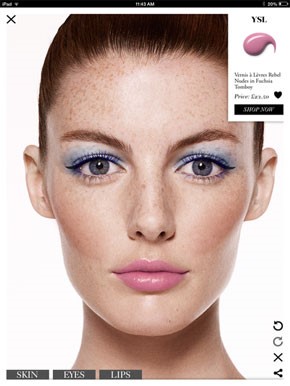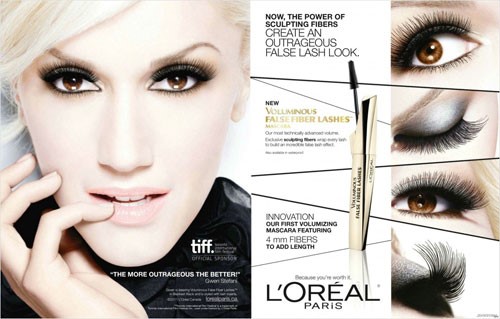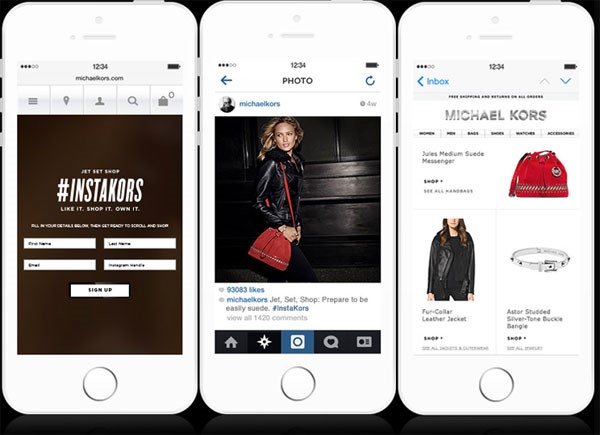In the fashion world, it’s often luxury designers that set the trends, so it’s no surprise that luxury brands and retailers are leading the mobile marketing way, creating unique digital experiences.
Here are 5 ways luxury brands are setting mobile commerce trends: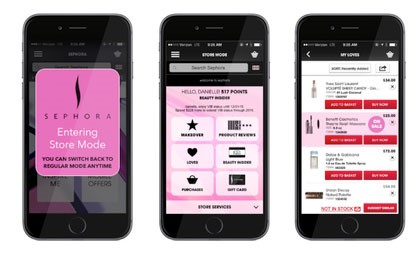
#InstaKors
Merchandising beyond the storefront is a drum I love to bang. It was my top ecommerce trend prediction in 2014, and frankly, retailers still aren’t doing enough of it.
What’s merchandising beyond the storefront? It’s moving beyond reliance on your website and creating shopping experiences through mobile, in-store tech, interactive ads, shoppable content and social networks.
One-click shopping through Instagram isn’t yet possible, but Michael Kors found a workaround with #InstaKors – collecting email addresses from ‘Gram followers and connecting them to their profile handles. Fans that want to purchase something in an #InstaKors-tagged image, can double click it and an email with a direct link to the product featured will be sent to his or her inbox.
While the process isn’t entirely frictionless, it cuts out the clunk of using search and guessing which keywords best describe an item and provides a novel way to monetize social.
Burberry Snapchat
There are a number of brands and retailers tinkering with Snapchat as a social marketing platform, and Burberry’s latest Snapchat effort uses it as a storytelling medium, counting down the days of its new Rodeo Drive flagship store opening.
Who cares? Why not just use email or mobile push notifications?
When marketing to millennials, using the platforms they’re addicted to makes sense. For omnichannel brands with retail locations, Snapchat teasers could be leveraged to drive traffic to stores for exclusive new products, store events or flash sales. It’s a great opportunity to explore for brands that cater to millennials.
Ideally, Snapchat, and Instagram, Pinterest, will evolve to include marketing tools to create opt-in lists of Snapchat followers which can be matched to customer profiles, which can be used for segmentation and personalization of Snapchat campaigns; such as interests, geographic targeting or gender.
If you’re at Adobe Summit EMEA this week, be sure to catch session DM51 Buongiorno, Silicon Valley: How an Italian fashion icon made commerce as smooth as silk Thursday, April 30 at 12pm.
Using a new model by Accenture Digital called “Fashion-in-a-Box”, this session will explore the ways that fashion and luxury retailers can transform their multi-channel businesses into digital-first retail empires that dazzle customers and increase revenue. Attendees will learn how to adopt a “best-of-breed” digital marketing and commerce strategy, providing their customers with personalized, immersive experiences that connect emotionally in a digitally enabled way.
L’Oreal Scan-to-Shop
Another example of merchandising beyond the storefront, L’Oreal’s mobile app includes scan-to-shop technology that allows fans to scan products in magazine ads or in-store to buy directly on mobile.
Scan-to-shop is a bona fide trend, with the likes of Nordstrom, Victoria’s Secret and Net-a-Porter also using this technology. The potential to take advantage of showrooming behavior using scanning and image recognition technology is an opportunity brands and retailers shouldn’t pass up.
Harrod’s Interactive
Harrod’s merges the retailer-as-publisher trend with interactive content. Its December/January 2014 issue of its iPad magazine app featured Makeup Studio, where users could virtually try on makeup looks from 4 brands sold at the department store.
Products could be purchased directly from the app, another great example of merchandising beyond the storefront, and the use of APIs to drive new digital experiences.
Too often mobile apps are built to mirror the website experience. It’s refreshing when experiences are designed to replicate the in-store experience.
Sephora’s Mobile App Store Mode
We know shoppers frequently use their smartphones to aid their in-store shopping, yet very few retailers have picked up on the opportunity to tailor the app experience to the in-store context.
Sephora’s To Go app will soon include “Store Mode” which turns on additional beacon-powered features that support and enhance the in-store shopping experience, like scanning products for rating and review info, quick access to purchase history and Loves list, access to loyalty status information and even augmented reality (e.g. take a selfie and receive makeup application tips for one’s face shape).
Omnichannel marketers should think through which features make sense to switch on in their mobile apps to provide the most relevant, engaging and useful experience to customers. This is a massive contextual commerce opportunity.
Who will follow the trends?
Any of these mobile marketing activities can be applied to non-luxury retailers provided the audience is appropriate and resources allow. Of these, mobile app “store mode” is my prediction for the one that will move from trend to classic, and have the most utility for all omnichannel retailers.
Fashion and lifestyle retailers would also be smart to create something like #Instakors, as Instagram has potential to, according to Forbes, become the “world’s most powerful selling tool.”



